 Asset Publisher
Asset Publisher
The State Forests National Forest Holding
The State Forests National Forest Holding is the largest organisation in the European Union managing forests, which belong to the State Treasury and celebrating its 90 anniversary this year.
Presently, we manage the area of one third of Poland's territory. Not long after the end of the Second World War, there was only 21 % of the area. Every year we plant 500 million of new trees, as we want Polish forests grow all the time.
Every year Polish foresters plant 500 million of trees.
85 % of nature reserves in Poland are located within the State Forests. 40 % of the forests managed by General Directorate of the State Forests are protected within the framework of European network Natura 2000. We fight against many threats: natural disasters, plaques of insects, trees' diseases, fires, pollutions, as well as poaching and vandalism.
We take care the forestry supplying the market with timber, as ecological and universal material, to be carried on in accordance with rules of balanced development (photography P.Fabjański).
One of our major tasks is making forests accessible to the society. We invite you to take advantage of these beautifully located within the forest wilderness holiday resorts, forester's lodges or guest rooms. That is for you, we create thousand kilometres of hiking trails, cycling paths or camping sites. All the above mentioned, you can find in service www.czaswlas.pl.
We also take care the forestry supplying the market with timber, as ecological and universal material, to be carried on in accordance with rules of balanced development. We obtain over 30 million of cubic meters of wood annually, twice as much as at the beginning of the nineties of the XX century.
Despite of this, the average of wood abundance per hectare of our forests is one fourth bigger than 20 years ago and 40% bigger than the average of European Union currently amounts.
In Poland in sectors connected with the forestry, there work about 375 thousand of people. It means that each 40 working Pole works in the forest.
In Poland in sectors connected with the forestry, there work about 375 thousand of people. It means that each 40 working Pole works in the forest. The sector of wood processing works out approximately 8 % of our GDP (Gross Domestic Product). Among others, thanks to the timber from the State Forests Poland is the 10 largest producer of furniture in the world, and the 4 largest furniture exporter.
The State Forests employ 25 thousand people. That way we are the 9 biggest employer in Poland. Among the largest companies in our country it takes 22 place in respect of its incomes and 11 place in respect of its profits. The value of assets, we manage, reaches 300 million zl. If we add social values, it will be worth one billion zlotych. We do not use money from the budget, but we earn money on our own to support the business. In spite of the financial crisis, since 2002, we continuously note down profits. Moreover, we pay taxes amounting 1,3 billion zl annually.
87 % of Poles think, the foresters are competent. We willingly share our knowledge of Polish forests, of their history and of nature values with the others. We publish books, periodicals, brochures; we also administer the website www.lasy.gov.pl . For children, the youth and teachers, we prepared internet service "E-lynx' Lynx Forest" (www.erys.pl). Our staff has supported schools in field of nature education for years. We also organise many actions to let people broaden their knowledge about forest, nature and ecology.
 Asset Publisher
Asset Publisher
KOLOROWY ZAWRÓT GŁOWY
KOLOROWY ZAWRÓT GŁOWY
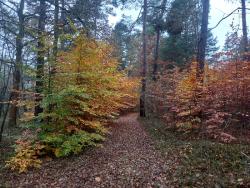 fot.J.Karwański
fot.J.Karwański
 fot.J.Karwański
fot.J.Karwański
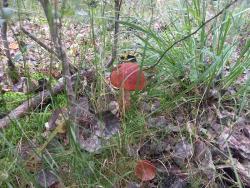 fot.J.Karwański
fot.J.Karwański
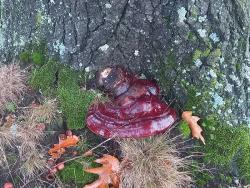 fot.J.Karwański
fot.J.Karwański
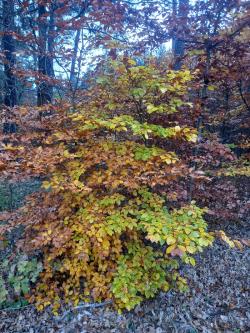 fot.J.Karwański
fot.J.Karwański
 fot.J.Karwański
fot.J.Karwański
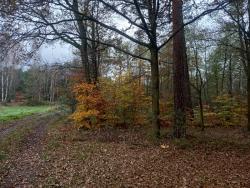 fot.J.Karwański
fot.J.Karwański
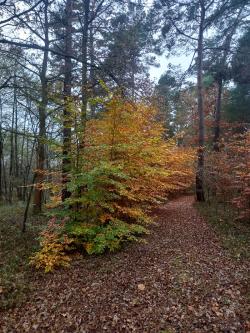 fot.J.Karwański
fot.J.Karwański
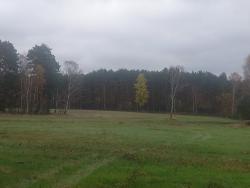 fot.J.Karwański
fot.J.Karwański
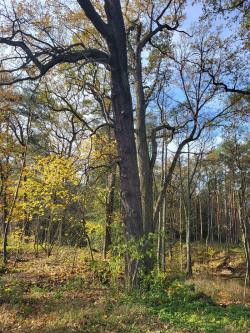 fot.J.Karwański
fot.J.Karwański
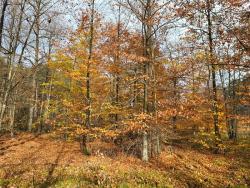 fot.J.Karwański
fot.J.Karwański
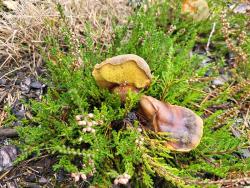 fot.J.Karwański
fot.J.Karwański
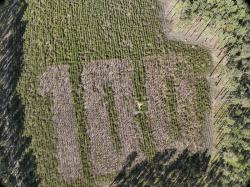 fot.K.Polus
fot.K.Polus
Tegoroczna jesień, nieco spóźniona zachwyca w lasach piękną paletą barw.
Jesień jest jedną z czterech pór roku związaną z cyklem rozwojowym przyrody. Początek wczesnej jesieni fenologicznej wyznacza kwitnienie wrzosu zwyczajnego, a także dojrzewanie m.in. borówki brusznicy. Właściwą jesień rozpoznaje się po zmianie kolorów liści i opadaniu ich z drzew.
Dlatego w tej porze roku liście zmieniają kolor i opadają?
To ciekawe zjawisko powiązane jest z biologią drzew. Liście swój zielony kolor zawdzięczają zawartym w nich związkom chemicznym głównie chlorofilowi. Odpowiada za zieloną barwę liści. Jest to związek niezbędny roślinom w procesie fotosyntezy (odżywiania organizmów roślinnych), w którym rośliny wykorzystują energię słoneczną do przekształcania dwutlenku węgla i wody w cukry. Do jego produkcji potrzebne jest ciepło i światło słoneczne. Gdy dni stają się coraz chłodniejsze i krótsze ilość chlorofilu w liściach zmniejsza się, co pozwala zaobserwować efekty działania innych barwników takich jak karotenoidom, antocyjanom i flawonoidom wcześniej zdominowanych przez chlorofil.
Jesienią swój czas mają karotenoidy i flawonoidy odpowiedzialne za pomarańczową i żółtą barwę liści. Zaczynają zanikać w tym samym czasie co chlorofil, lecz jest to proces znacznie wolniejszy. Dlatego często na tym samym liściu możemy zaobserwować różne barwy. Jako ostatnie widoczne są antocyjany, które nadają liściom czerwony kolor. To grupa barwników syntezowanych dopiero jesienią, gdy chlorofil przestaje działać. Czasami możemy zaobserwować różnokolorowe liście na tym samym drzewie. Każdy z nich na dostępność światła reaguje indywidualnie, więc liście będące stale nasłonecznione będą dłużej zielone.
Zatrzymanie produkcji chlorofilu jest również sygnałem dla drzew, że należy przygotować się do zimy. Wycofują one wtedy składniki odżywcze i wodę do łodyg i korzeni, co powoduje usychanie i opadanie liści.
Bardzo ciekawe pejzaże związane z jesiennymi „przemianami” w liściach można zauważyć w z lotu ptaka, szczególnie w drzewostanach mieszanych iglasto – liściastych. W ostatnich latach w wielu leśnych ostępach w Polsce celowa obsada określonych gatunków drzew spowodowała, uzyskanie określonych kształtów, symboli czy wzorów, upamiętniających ludzi, instytucje, lub wydarzenia, których obecność pozostanie w przyrodzie na kilka dekad.
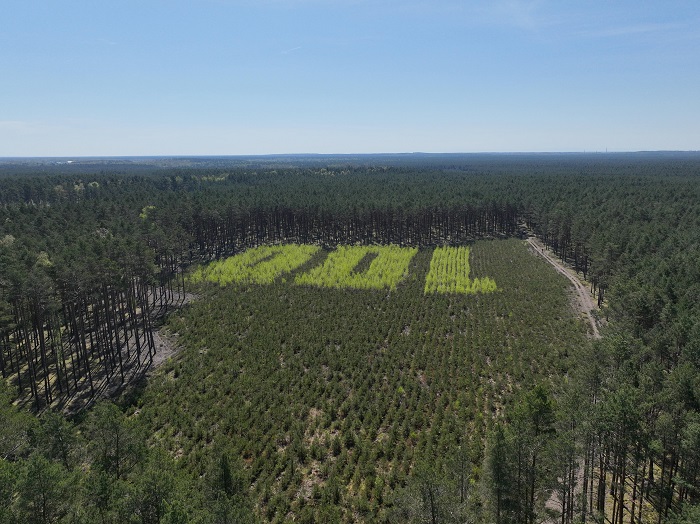
Las upamiętniający setną rocznicę odzyskania niepodległości przez Polskę (fot. K.Polus)
Biorąc pod uwagę jesienne piękno naszej rodzimej przyrody zapraszamy na leśne spacery!


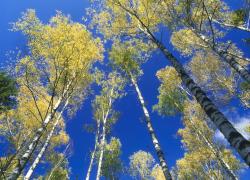 fot. Paweł Fabijański
fot. Paweł Fabijański
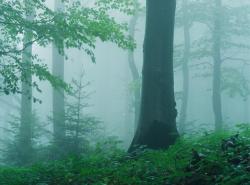 fot. Paweł Fabijański
fot. Paweł Fabijański
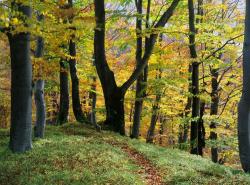 fot. Paweł Fabijański
fot. Paweł Fabijański




